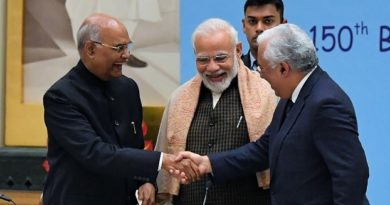20 Interesting facts of Lord Shiva which you should know
In the Hinduism, Lord Shiva, also known as the destroyer, is one of the most important Gods in the Hindu Pantheon, the other two being Lord Brahma the Creator and Lord Vishnu the Protector. A great ascetic, Shiva is the only Godhead who is forever in deep meditation, totally absorbed in contemplation in his abode, the Kailasa Mountain in the great Himalayas. Read out Interesting facts of Lord Shiva in the below post:-
Also check – Books you should read before you celebrate your 31st birthday
Meanings of Shiva
The Shiva is a Sanskrit word having an adjective meaning pure. Shiva, the word means auspicious and it is used as an adjective originally originated from the Rig Veda. Shiva to have multiple meanings: The Pure One or the One who is not affected by three gunas of prakriti (Sathva, Rajas, and Tamas) or the One who purifies everyone by the very utterance of his name. According to Swami Chinmayananda, the meaning of Lord Shiva is the One who is eternally pure or the One who cannot ever be contaminated of the imperfection of Rajas and Tamas. The Supreme God of Hindu Shiva is considered as he has no Aadi or Anta that he has no birth or death.
Now, lets read about the 20 interesting facts about Lord Shiva which you should really know. Here they are:
1. The legend of Neelkanth
When the ocean of milk was being churned by the devas and asuras, there appeared a deadly poison known as halahal. This poison had the capacity to destroy the entire creation. Lord Shiva instantly drank the entire poison. Goddess Parvati caught hold of his neck to stop the poison from entering his body and so it remained in his throat making it blue. Therefore Lord Shiva came to be known as Neelkanth (the blue-throated lord).
2. The snake around Lord Shiva’s neck
The snake stands for desires. By wearing the snake around his neck, Lord Shiva conveys the message that he has overcome all desires. The snake has three rounds around Lord Shiva’s neck. Each round represents past, present and future. This indicates that Lord Shiva is beyond time and controls it.
3. The Moon on Lord Shiva’s head
The Moon god Chandra married twenty seven daughters of Daksha but paid attention to one wife only (Rohini). Angered at Chandra’s attitude, Daksha cursed him that he would lose all his shine. Chandra went to Brahma who asked him to approach Lord Shiva. After blessing Chandra, Lord Shiva personally kept him on his head from then onwards.
4. Lord Shiva the bull-bannered Lord
Once the milk of a lot of cows flooded Lord Shiva’s palace. Angered, Lord Shiva struck the cows with the fire from his third eye. To pacify Neelkanth, Indra and the devas offered him a magnificent bull, Nandi. From then onwards, Nandi became Lord Shiva’s vehicle and thus Lord Shiva became the bull-bannered Lord.
5. Lord Shiva’s cosmic dance
Tandav is the dance performed by Lord Shiva in response to goddess Parvati’s cosmic dance, Lasya. The movements of goddess Parvati during Lasya is gentle and graceful whereas the movements of Lord Shiva during Tandav is vigorous and fearful. Lasya is responsible for creation whereas Tandav is responsible for destruction, hence the two cosmic dances regulate the cycle of creation and destruction.
You would like to read Mistakes people make that destroy their financial lives
6. Lord Shiva’s trident
The trident of Lord Shiva (Trishul) represents the three fundamental dimensions of life. They are- the inside world, the world around him and the expansive world. It parallelly conveys the fact that Lord Shiva is the master of the three material modes- raja, sattva and tama. He has complete control over these three modes of nature.
7. Three horizontal lines of ashes on Neelkanth’s forehead
The first line represents Garhapatya fire and the deity Maheshwar. The second line represents Dakshinagni fire and the deity Sadashiva. The third line represents Ahavaniya fire and the deity Mahadeva. The three lines on Lord Shiva’s forehead represent the destruction of three worlds.
8. Lord Shiva’s ash smeared body
Lord Shiva smears his body with ash to remind his devotees about the imprudence of getting enthralled by physical beauty. Lord Shiva’s ash smeared body adorns his spiritual supremacy.
9. Lord Shiva’s Damaru
Damaru (Lord Shiva’s drum) adorns the sound which represents the words of Vedas and beats of Damaru generate spiritual energy.
10. Rudraksha rosary in Lord Shiva’s right hand
Rudraksha beads denote purity. The rosary represents concentration.
11. Lord Shiva the Adiyogi
Lord Shiva is the first among all yogis, therefore he is known as Adiyogi. Neelkanth invented the seven steps of Ashtang yoga.
12. Lord Shiva is the original god of wealth and prosperity
Lord Shiva gave boon to Kubera which made him the deity of wealth and prosperity.
13. Neelkanth wears skin of elephant
Along with tiger skin, Lord Shiva also wears the skin of an elephant. A demon Kriti, in the disguise of elephant, requested Shiva to wear his skin. Thus Lord Shiva is also known by the name- Kritivas, which means one who bears Kriti.
14. Lord Shiva’s demon sons
Jalandhar was born from fire of the third eye of Lord Shiva. Andhak was born when goddess Parvati covered Lord Shiva’s eyes, and the sweat that oozed out from her hands fell to the ground.
15. Neelkanth as Nataraj
Lord Shiva took the form of Nataraj and performed Tandav dance, crushing Apasmar (demon of ignorance) under his feet. Neelkanth’s Nataraj form is a message that ignorance can only be overcome by knowledge, music and dance.
16. Fierce forms of Lord Shiva
Being the god of destruction, Lord Shiva has many destructive forms- Rudra, Veerbhadra, Bhootnath, Bhairav and Kalbhairav are notable ones.
17. Lord Shiva the fisherman
One day, Lord Shiva was explaining Vedas to his wife, Goddess Parvati. During the discussion goddess Parvati lost her concentration. This angered Lord Shiva, who in a fit of anger cursed her to take birth as a fisherwoman. Filled with remorse, Lord Shiva had to take the form of a fisherman to bring his beloved back to Mount Kailash.
18. The supreme giver
Neelkanth Lord Shiva is the supreme giver- drank the poison and saved the world, bore Ganga in his crest and protected the land from her extreme flow, made Moon his crown and saved him from the curse of Daksha.
19. The supreme lord
The god who belongs to all the creatures, animals, humans, demons, deities, ghosts, goblins, ghouls and whose prayers don’t involve any procedure or method.
20. Origin of Neelkanth
Lord Shiva is “who is not”. It means “Nothing”, which signifies that this universe is created from nothing or silence or darkness or zero. The sound of OM signifies the supreme energy of Lord Shiva.
Lord Shiva is selfless and is always there to help a cause. Therefor his followers love him. Bum Bum Bhole.
Happy Mahashivratri to everyone. Keep reading the blog.





Good website! I really love how it is easy on my eyes and the data are well written. I am wondering how I could be notified whenever a new post has been made. I have subscribed to your RSS feed which must do the trick! Have a nice day!